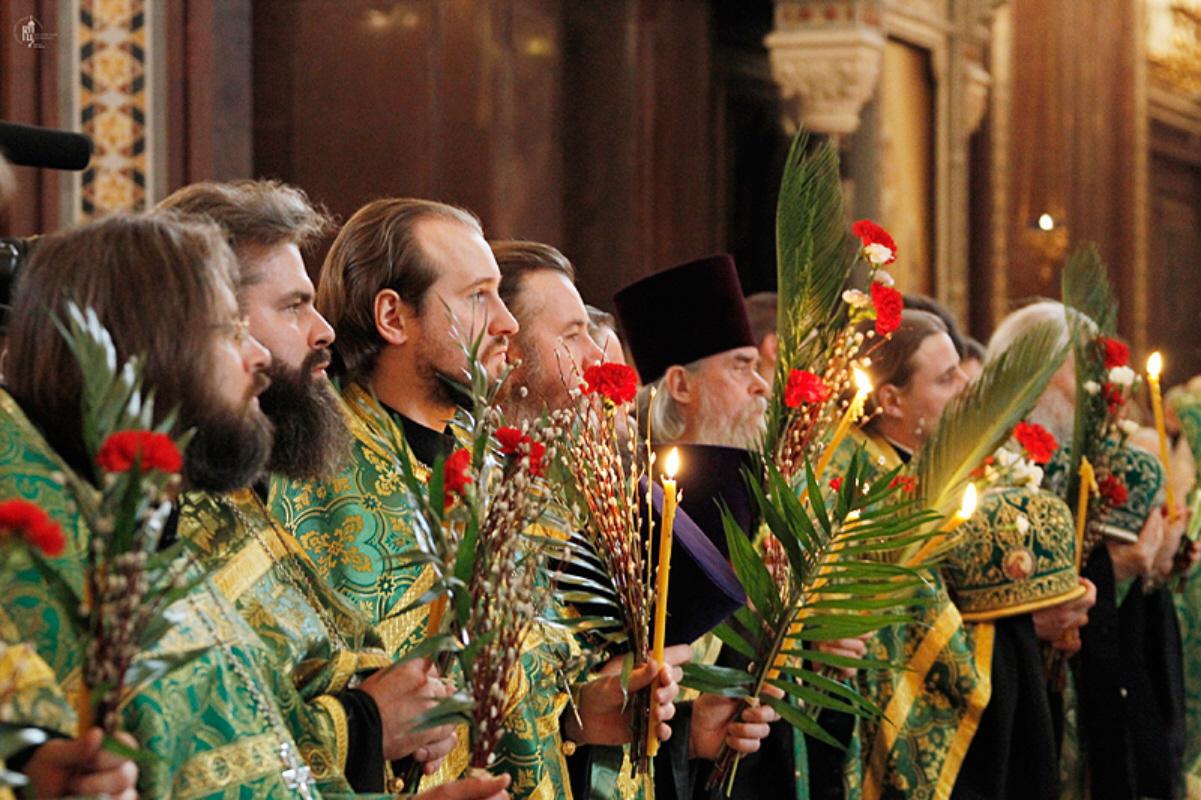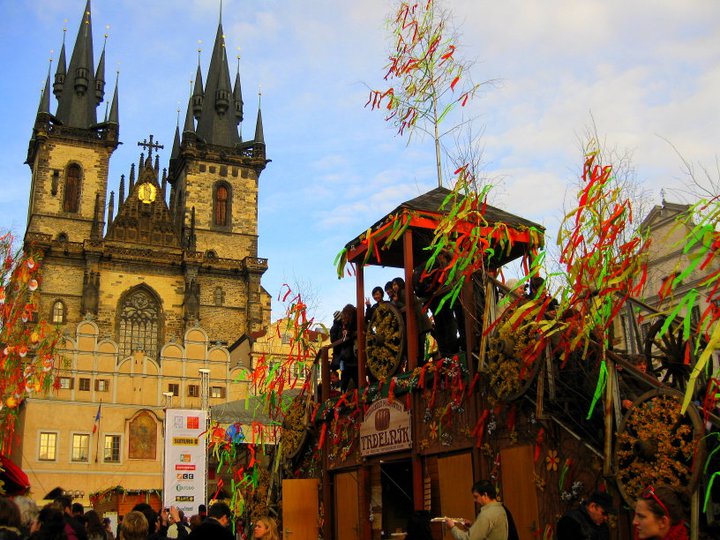
Palm Sunday in Moscow (2011); the clergy are holding festive bundles of palm fronds and pussy willows.
The Christian world celebrates Jesus’ emntrance into Jerusalem on the last Sunday before Easter(in the English speaking world) or PASCHA (most other traditional Christian cultures/languages) and this celebration of Jesus’ entrance into the Holy City is commonly called “Palm Sunday.” When Christianity came to northern and eastern Europe, no palms were available so the local plants which sprouted earliest were used in the celebrations. Even now, willows, osiers and weeping willows are consecrated on Palm Sunday in most of Central Europe and Eastern Europe.
In Lithuanian folklore, the osier — a kind of willow with male spores — was regarded as an unusual tree. Folklore tells that the osier grew out of a secretly murdered man. A fife made of osier wood, speaks in a man’s voice. Evil spirits avoid it because of its red color.
Many palm bunches have a branch of juniper in them. Juniper is green year round, with late ripening berries (which are used to flavor gin) and with a peculiar odor. Cranberry, mistletoe, filbert and oak branches together with dried baby’s breath and ferns are sometimes also used with the palms or willows. Pussy willows are especially common in the Eastern Orthodox churches. Among the Czechs and in the Baltic States, there is an old custom of whipping each other with the willows from church. Having returned home with consecrated fronds, one whips the head, back shoulders of those who stayed home, repeating all the time, ” illness out, health return”. The following words were spoken or sung, when striking with the palm:
“I am not the one striking
The Palm is striking
You are not in pain
The Palm is in pain
Soon it will be Easter!”
OR
“It is not I who is thrashing, but the rod
It will thrash until it breaks
The great day is in a week
It will entertain everyone
Remain the same as you have been
Be healthy as a fish.”
Lithuanian writings of 1573 say that to protect from devils and thunder, crosses were made from the consecrated palms and were thrust behind doors, windows and gated. Most often the palms were placed behind pictures of saints until the junipers dried and began shedding. The juniper branches are burned and these ashes, together with juniper sheddings, are placed in attics to protect roofs from storms. As thunder knocks, a palm is placed on the windowsill, on the side of the storm.
The smoke of a burning palm, scents all corners of the house and protects from thunder. Palms were nailed to beehives so that bees would swarm in great numbers. Palms were tied with colored, wooly yarns. This yarn was used to bind women’s wrists, to keep away pain. That was the most popular healing method during harvest work. Before animals were let out of barns in the spring, they were incensed with a burning palm. It was also said that if a palm was planted near water and it began to sprout, there would be no water shortage.
There are several other folk practices associated with the palms and willows:
1 – he who goes to church on Palm Sunday without a palm in his hands, the devil will shove his tail into the hands.
2 – collecting branches to make palms, select those with many buds. The more buds, the longer will be your life.
3 – if you plant consecrated palms on both river banks, when it is the end of the world and all waters vanish, there will be drinking water where the palms are growing.
4 – one should not comb hair on Palm Sunday, because fleas will grow to the size of the palm, or buds on the branches.
5 – if the palm lasts three years, then when black clouds cover the skies, take the palm and cross the clouds with it.
6 – old palms should be burned and their ashes sprinkled over cabbages, to protect them from worms.
Want to see my other blog posts and photos about Palm Sunday, willows, etc,? Click here and here.

